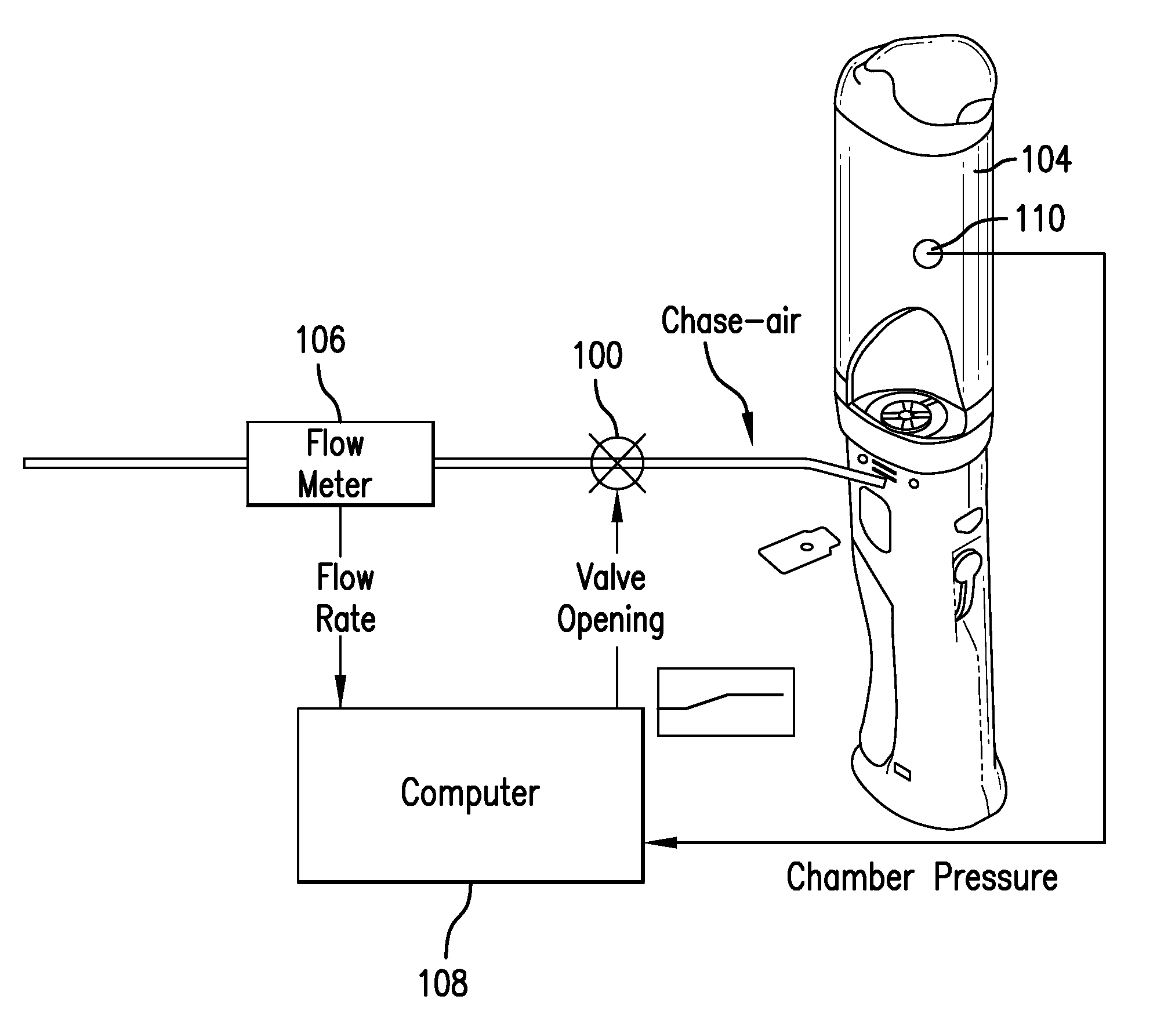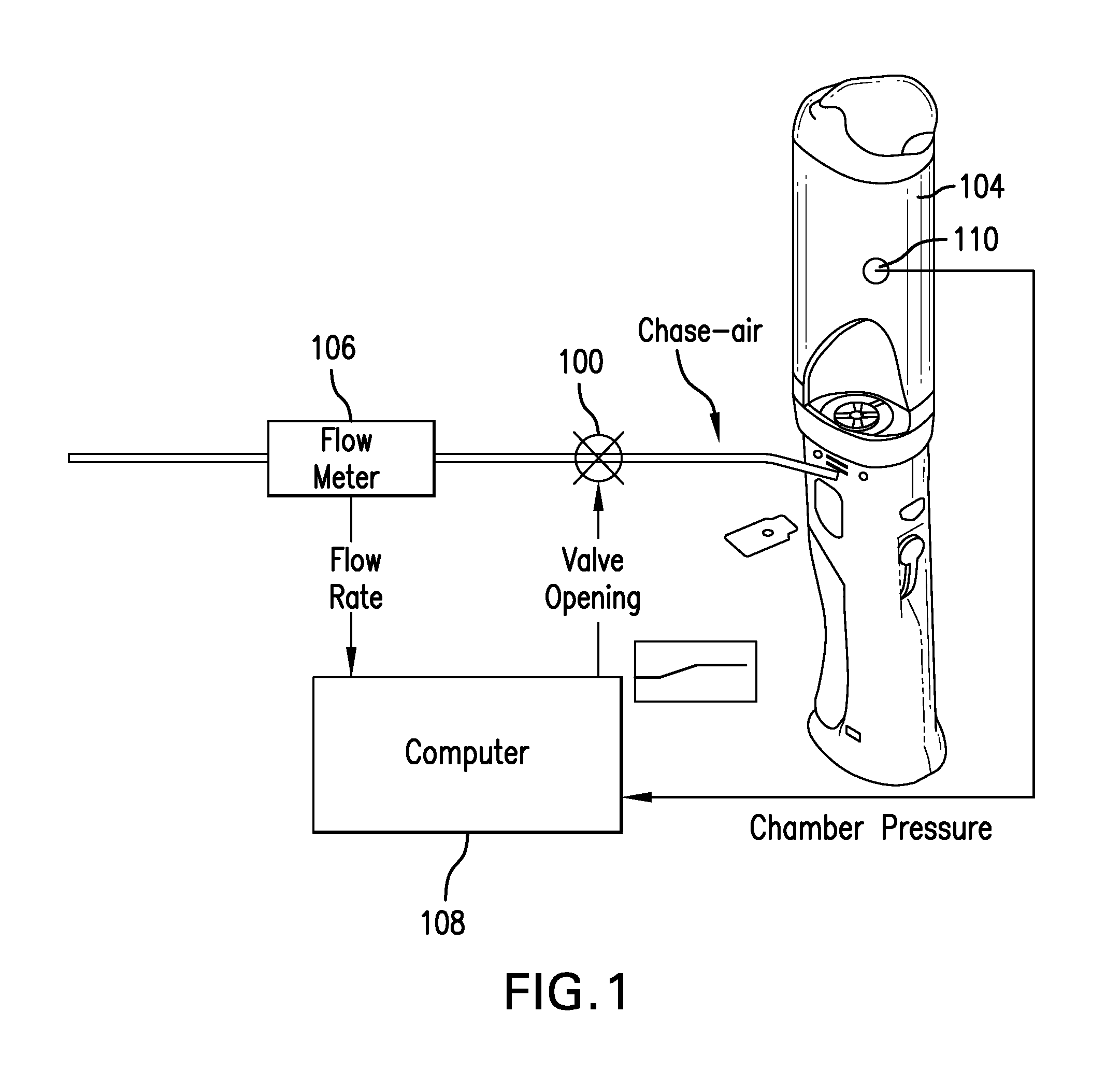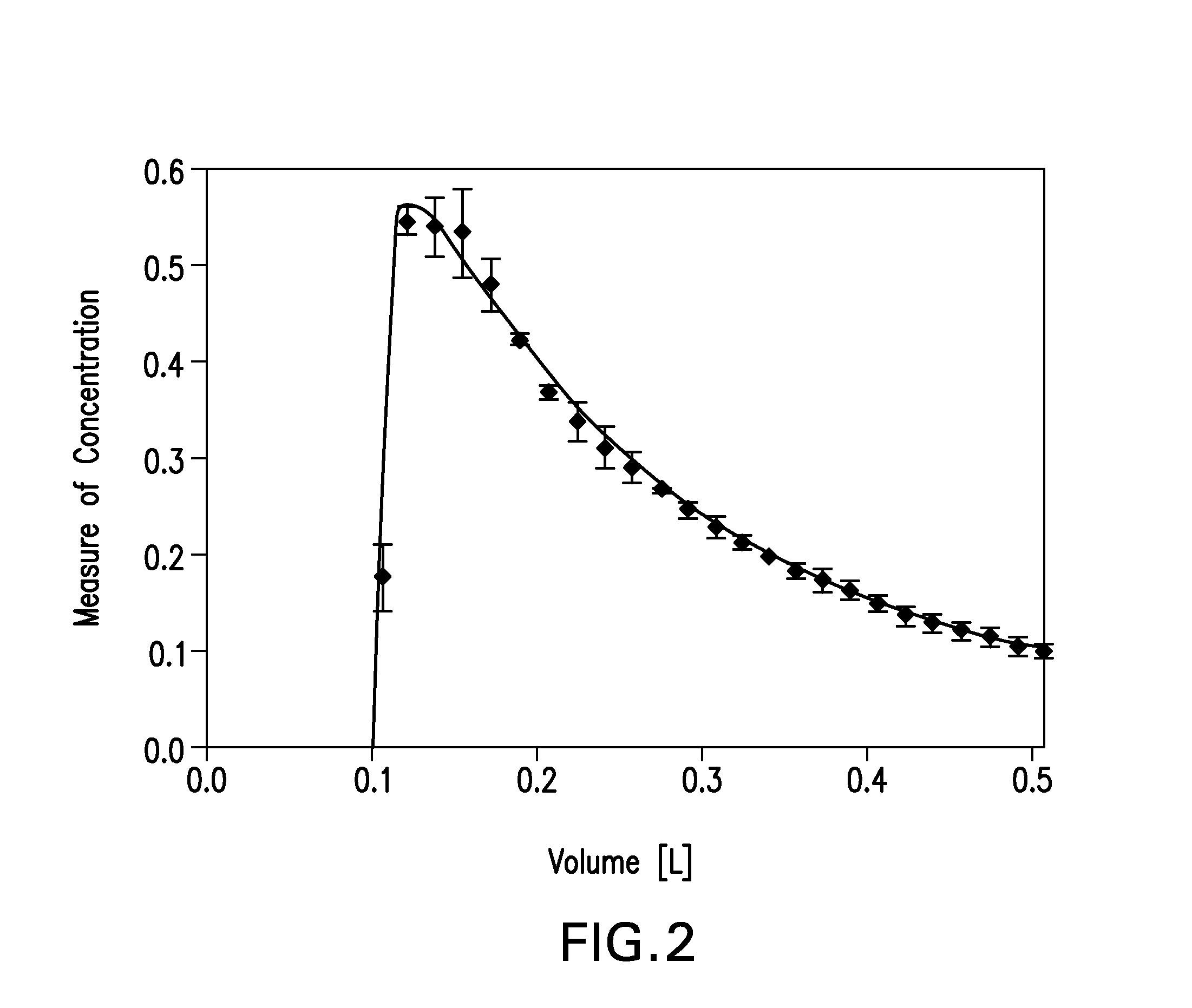Flow resistance modulated aerosolized active agent delivery
- Summary
- Abstract
- Description
- Claims
- Application Information
AI Technical Summary
Benefits of technology
Problems solved by technology
Method used
Image
Examples
example 1
[0041]In order to determine the relationship of flow resistance to flow rate, 10 volunteers, 5 males (M) and 5 females (F) were asked to breathe against 3 different resistances and instructed to inhale both maximally and at a comfortable rate. The results are shown in FIGS. 6-9. FIGS. 6 and 7 are the flow rates for maximal and comfortable inhalation rates for males and females. FIGS. 8 and 9 show the volumes of aerosol inhaled at the maximum and comfortable inhalation rates and resistances described above.
[0042]The resistance to comfortably maintain a 10 liter per minute flow rate is about 0.3 (cm H2O)2 SLM. Further, the inspiratory volume of aerosol delivered at higher flow resistances drops because inspiration becomes more and more difficult and less comfortable as resistance increases. In fact, if resistance is decreased after the initial aerosol delivery period of high resistance, the inspiratory volume will not decrease significantly over the volume delivered at a constant low ...
example 2
Materials and Methods
Materials
[0043]Crystalline human zinc insulin, 26.3 U / mg is obtained from Eli Lilly and Company, Indianapolis, Ind. and found to be>99% pure as measured by reverse phase HPLC, USP mannitol is obtained from Roquette Corporation (Gurnee, Ill.). Glycine was purchased from Sigma Chemical Company (St. Louis, Mo.). Sodium citrate dihydrate, USP is obtained from J. T. Baker (Phillipsburg, N.J.).
Powder Production
[0044]Insulin powders are made by dissolving bulk crystalline insulin in sodium citrate buffer containing mannitol and glycine to give final solids concentration of 7.5 mg / ml and pH of 6.7±0.3. The spray dryer is operated with an inlet temperature between 110° C. and 120° C. and a liquid feed rate of 5 ml / min, resulting in an outlet temperature between 70° C. and 80° C. The solutions are then filtered through a 0.22 μm filter and spray dried in a Buchi Spray Dryer to form a fine white amorphous powder. The resulting powders are stored in tightly capped container...
PUM
| Property | Measurement | Unit |
|---|---|---|
| Time | aaaaa | aaaaa |
| Time | aaaaa | aaaaa |
| Compressibility | aaaaa | aaaaa |
Abstract
Description
Claims
Application Information
 Login to View More
Login to View More - R&D
- Intellectual Property
- Life Sciences
- Materials
- Tech Scout
- Unparalleled Data Quality
- Higher Quality Content
- 60% Fewer Hallucinations
Browse by: Latest US Patents, China's latest patents, Technical Efficacy Thesaurus, Application Domain, Technology Topic, Popular Technical Reports.
© 2025 PatSnap. All rights reserved.Legal|Privacy policy|Modern Slavery Act Transparency Statement|Sitemap|About US| Contact US: help@patsnap.com



